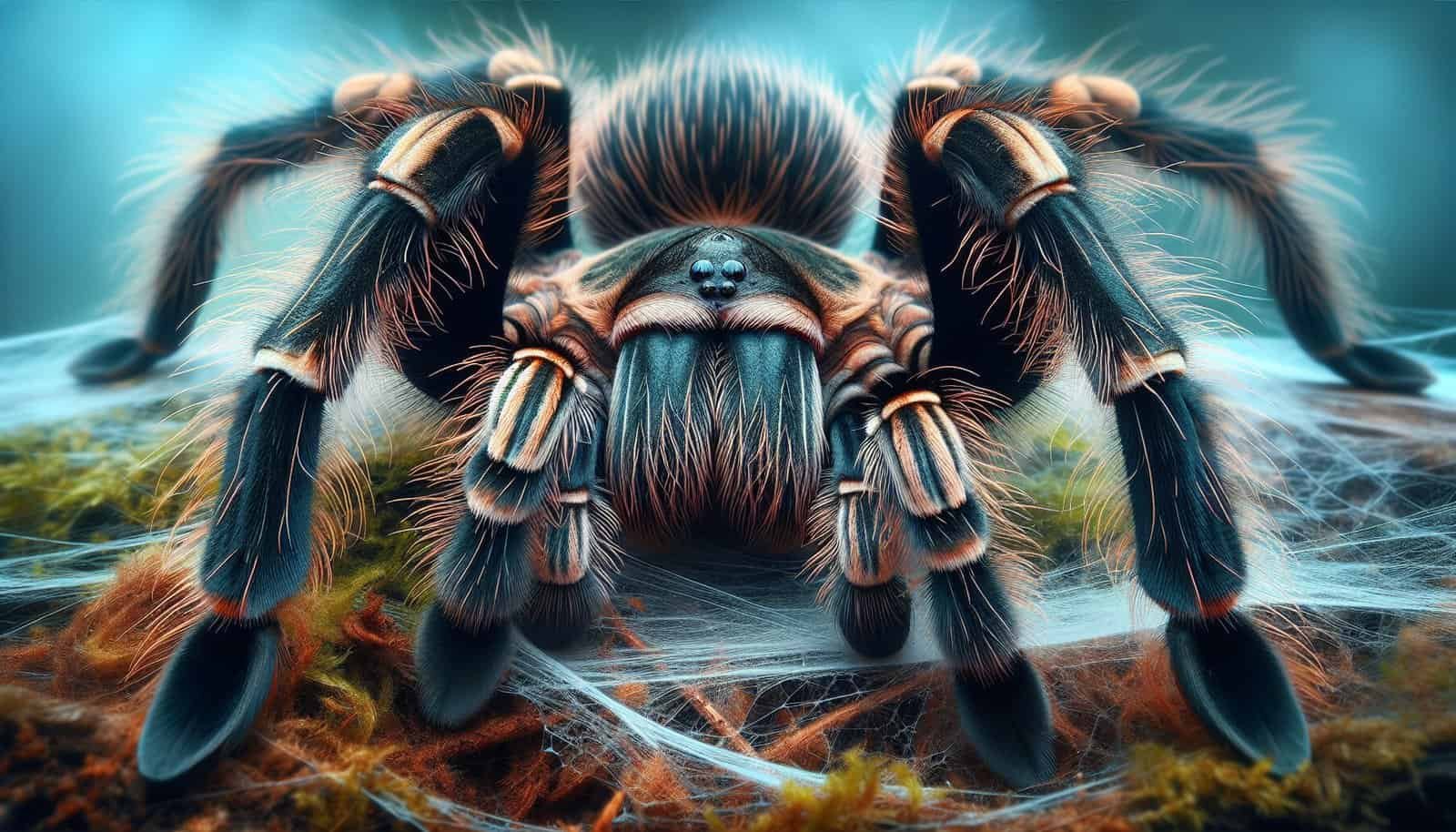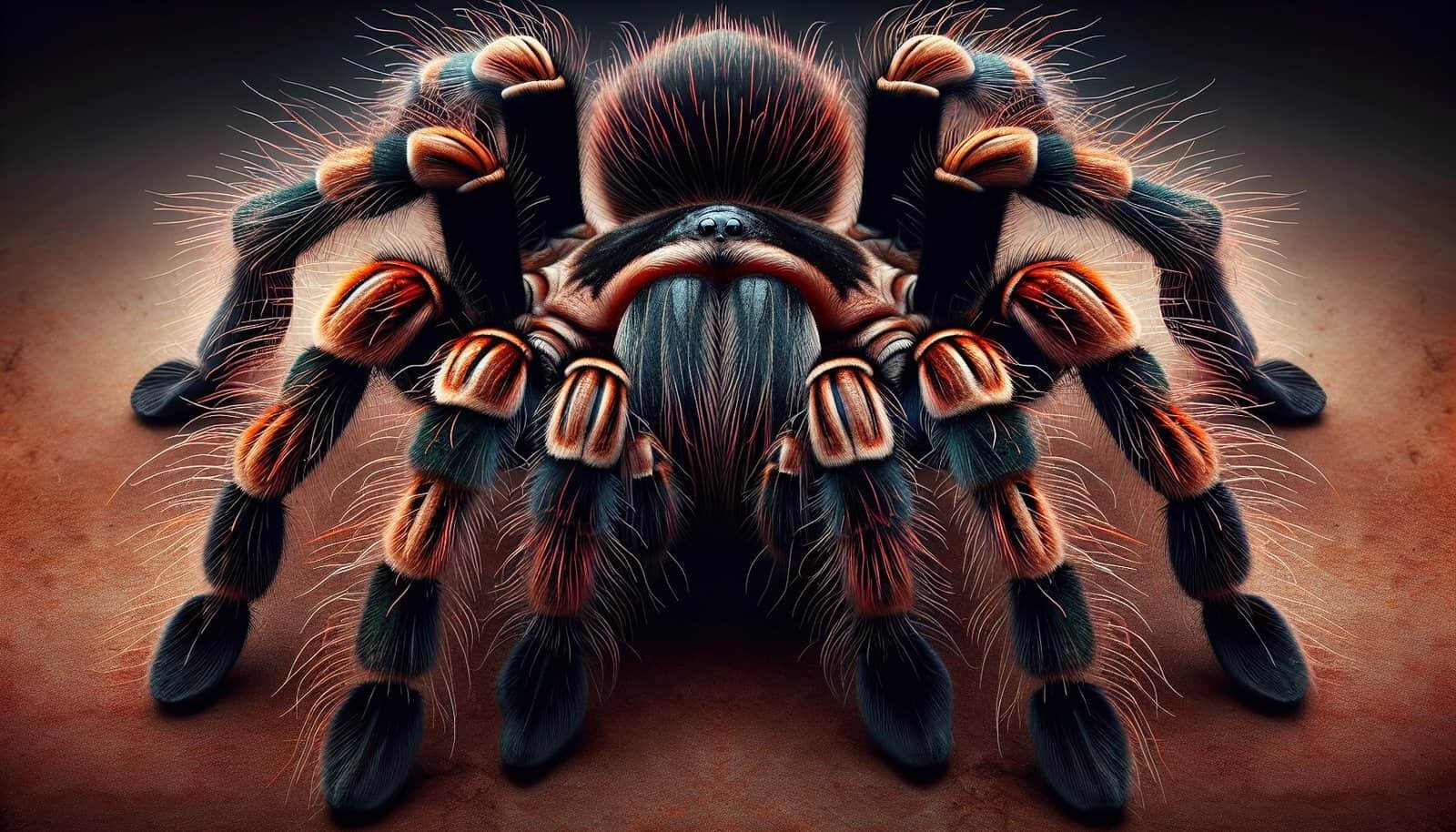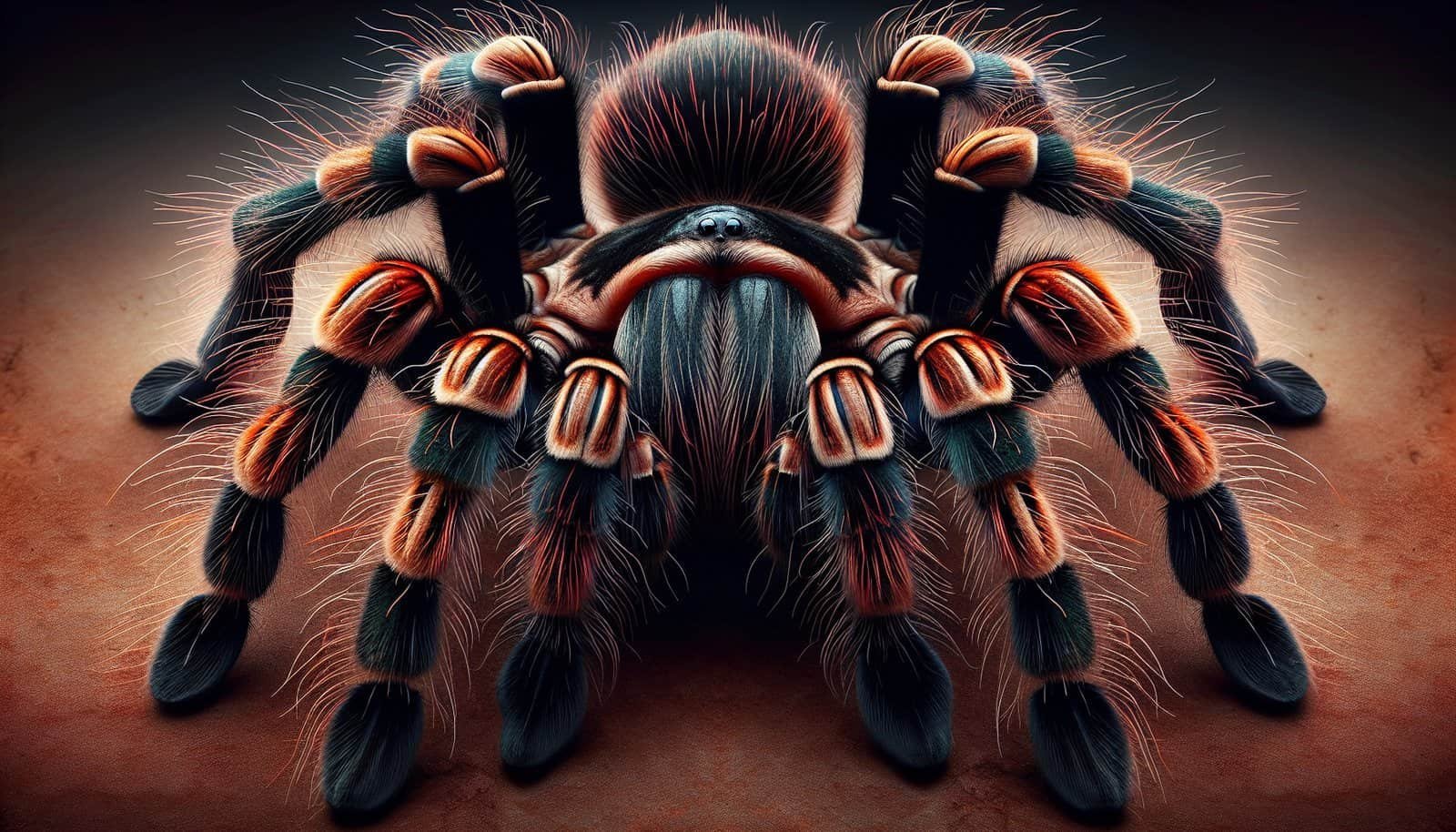Imagine a world where the creepy crawlies are suddenly under threat, not by humans or environmental changes, but by sneaky invaders from afar. You might think that tarantulas, with their intimidating size and venomous reputation, would have no trouble defending their turf. Yet, it turns out that even these mighty creatures may not be invincible to a different kind of predator lurking in their habitats – invasive species. In this article, we take a closer look at the surprising ways in which tarantulas and invasive species interact, and the potential implications for these fascinating arachnids. So, let’s dive into the captivating world of tarantulas and uncover the hidden threats they face.
Overview of Tarantulas
Tarantulas are a fascinating group of spiders known for their large bodies and striking appearances. These arachnids belong to the family Theraphosidae and can be found in various parts of the world, including North and South America, Africa, and Asia. With over 900 recognized species, tarantulas come in a wide array of colors, shapes, and sizes. From the vibrant orange and black Harpactira pulchripes to the impressive Goliath birdeater, tarantulas have captivated the curiosity of both scientists and nature enthusiasts.
Types of tarantulas
Tarantulas exhibit remarkable diversity, with each species having its own unique characteristics and adaptations. One of the most notable distinctions among tarantulas is their temperament. Some species are docile and make popular pets, while others have a more defensive nature and should be handled with caution. Additionally, tarantulas vary in size, ranging from 1 to 6 inches in leg span. This size variation allows them to occupy different niches within their habitats.
Habitats of tarantulas
Tarantulas have adapted to a wide range of habitats, ranging from rainforests and deserts to grasslands and mountains. Each species has specific habitat requirements that dictate their distribution. For example, the Mexican red-knee tarantula (Brachypelma smithi) is found in the scrublands and tropical forests of Mexico, while the Chilean rose tarantula (Grammostola rosea) inhabits the arid regions of Chile. These spiders often construct burrows in the ground or seek shelter under rocks, logs, or vegetation to create their homes.
Ecological importance of tarantulas
Tarantulas play a crucial role in maintaining ecological balance in their respective habitats. As ambush predators, they regulate populations of insects and other small arthropods, thereby preventing potential outbreaks or imbalances in these populations. Additionally, tarantulas serve as prey for various predators, contributing to the intricate food webs within their ecosystems. Their presence in the food chain also ensures the transfer of energy and nutrients to higher trophic levels.
Understanding Invasive Species
Definition of invasive species
Invasive species can be defined as non-native organisms that are introduced to a new environment, whether intentionally or unintentionally, and have a negative impact on the native species and ecosystems. These species often thrive and spread rapidly in their new habitats, outcompeting native species for resources and altering the dynamics of the ecosystem they invade.
Examples of invasive species
There are numerous examples of invasive species that have caused detrimental effects in various parts of the world. One notable example is the brown tree snake (Boiga irregularis) in Guam, which was likely introduced during or after World War II. This invasive snake has decimated the native bird population on the island, leading to significant ecological imbalances. Another example is the red imported fire ant (Solenopsis invicta), which has spread throughout the southern United States and poses a threat to both humans and wildlife.
Negative impacts of invasive species
The presence of invasive species can have severe consequences for both ecosystems and native species. Invasive species often outcompete native species for resources such as food, habitat, and mates, leading to a decline in native populations. Additionally, they can alter the structure and function of ecosystems, disrupting the natural balance and causing cascading effects on other species within the community. Invasive species can also introduce new diseases or parasites to native populations, further exacerbating the impacts.

Tarantula Habitats and Invasions
Native habitats of tarantulas
Tarantulas have evolved in specific geographic regions and have established intricate relationships with their native habitats. These habitats provide the necessary environmental conditions, such as temperature, humidity, and prey availability, for tarantulas to thrive. Each tarantula species has adapted to the unique characteristics of its native habitat, allowing them to occupy specific niches within their ecosystems.
Invasive species introduction
The introduction of invasive species into the native habitats of tarantulas poses a significant threat to their survival. When non-native species are introduced, either intentionally or accidentally, they can outcompete native tarantulas for resources, disrupt their food webs, and create imbalances within the ecosystem. The ecological impacts can be particularly devastating if the invasive species has no natural predators or competitors in the new environment.
Competition for resources
Invasive species often compete with native tarantulas for limited resources, such as food, shelter, and mates. This competition can lead to reduced access to resources for native tarantulas, which may result in population decline and altered behaviors. As invasive species continue to establish themselves in the habitat, they can monopolize resources and create a hostile environment for the native tarantulas, pushing them to the brink of extinction.
Potential Threats to Tarantulas
Predation by invasive species
Invasive species that have a predatory nature can pose a direct threat to tarantulas. For instance, invasive mammals like feral cats and rats can prey on tarantulas, leading to population declines and potential local extinctions. These invasive predators may not have evolved alongside tarantulas and can have a significant advantage over them, resulting in imbalances within the predator-prey dynamics and negatively impacting tarantula populations.
Habitat alteration
The introduction of invasive species can also lead to habitat alteration, further threatening tarantulas. Invasive plants, for example, can outcompete native vegetation and alter the structure of the ecosystem, potentially eliminating or degrading the natural habitats of tarantulas. Changes in vegetation cover and composition can directly impact the availability of suitable shelter and prey for tarantulas, further exacerbating their vulnerability to other threats.
Displacement by invasive species
Invasive species can outcompete native tarantulas for established territories and resources, ultimately displacing them from their habitats. The ability of invasive species to rapidly adapt and exploit new environments can give them a competitive advantage over the native tarantulas, leading to decreased population sizes and potential local extinctions. The displacement of native tarantulas by invasive species disrupts the ecological balance and can have cascading effects on other species within the ecosystem.

Case Studies: Tarantulas vs Invasive species
Invasive mammals and tarantulas
Invasive mammals, such as feral cats and rats, have been introduced to many regions worldwide, including areas where tarantulas naturally occur. Studies have shown that these invasive mammals can have a significant negative impact on tarantula populations. For example, research conducted in Australia found that feral cats prey on native tarantulas, leading to population declines in certain areas. The introduction of predatory mammals can disrupt the balance of native prey-predator interactions, resulting in severe implications for tarantulas.
Invasive reptiles and tarantulas
The invasion of non-native reptiles, such as snakes and lizards, can also have adverse effects on tarantulas. In regions where invasive reptiles have established themselves, native tarantulas may face increased predation pressure. For instance, in areas where the brown tree snake has become invasive, native tarantulas have experienced population declines due to predation. The introduction of invasive reptiles creates an unbalanced predator-prey relationship, threatening the survival of tarantulas.
Invasive insects and tarantulas
Invasive insects, such as ants and beetles, can directly compete with tarantulas for food resources and impact their populations. In certain habitats, invasive ants have been found to outcompete native tarantulas for prey, leading to decreased foraging success and potentially reducing their chances of survival. Additionally, invasive beetles can alter the availability and composition of vegetation, indirectly affecting the habitats and food sources of tarantulas. The complex interactions between invasive insects and tarantulas highlight the need for comprehensive management strategies.
Impacts on Tarantula Population
Population decline due to invasive species
Invasive species can cause population declines in tarantulas through various mechanisms. Direct predation, competition for resources, and displacement from habitats can all contribute to reduced population sizes. When invasive species become established in tarantula habitats, they disrupt the natural balance and can lead to significant declines in native tarantula populations. The loss of even small populations of tarantulas can have cascading effects on their ecosystems, impacting other species and ecological processes.
Decreased genetic diversity
Invasive species pose a threat to the genetic diversity of tarantulas. As invasive species outcompete and displace native tarantulas, the remaining populations become more isolated and fragmented. This isolation can lead to reduced gene flow and limited opportunities for genetic exchange, ultimately decreasing the genetic diversity within tarantula populations. Decreased genetic diversity can impede the ability of tarantulas to adapt to changing environmental conditions, making them more susceptible to further threats.
Indirect effects on ecosystem
The impacts of invasive species extend beyond tarantulas themselves. As key predators in their ecosystems, tarantulas help regulate populations of insects and other small arthropods. When tarantula populations decline due to invasive species, there can be an imbalance in prey populations, potentially causing outbreaks or imbalances in the ecosystem. The loss of tarantulas as predators can disrupt the delicate web of interactions within their ecosystems, leading to unintended consequences for other species and ecological processes.

Conservation Efforts
Monitoring and research
Effective conservation efforts for tarantulas and their habitats rely on comprehensive monitoring and research initiatives. Monitoring populations, behavior, and ecological interactions of tarantulas can provide valuable insights into the impacts of invasive species and other threats. Additionally, research on tarantula biology, habitat requirements, and responses to environmental changes can inform management strategies and conservation actions.
Management strategies
To mitigate the threats posed by invasive species, effective management strategies are crucial. Implementing measures to control and eradicate invasive species can help alleviate pressure on native tarantulas. This may involve the removal of invasive predators or the implementation of prevention measures to limit the introduction and spread of invasive species in tarantula habitats. Furthermore, habitat restoration efforts can help create suitable conditions for the recovery of tarantula populations and enhance their resilience to invasive species.
Restoration of tarantula habitats
Restoring tarantula habitats is an essential component of conservation efforts. This may involve rehabilitating degraded areas, reintroducing native vegetation, and creating habitat corridors to reconnect fragmented populations. By restoring and expanding suitable tarantula habitats, conservationists can increase the resilience of tarantula populations and enhance their chances of survival in the face of invasive species and other threats.
The Role of Climate Change
Climate change and invasive species
Climate change can interact with invasive species to create novel challenges for tarantula conservation. Rising temperatures, changes in precipitation patterns, and altered habitat suitability can influence the distribution and abundance of both native tarantulas and invasive species. Climate change can indirectly facilitate the establishment and spread of invasive species, further exacerbating the threats they pose to tarantulas and their habitats.
Climate-induced shifts in tarantula habitats
As climate change alters environmental conditions, it can impact the suitability of habitats for tarantulas. Changes in temperature and precipitation patterns may lead to shifts in the geographic range of tarantulas, potentially causing localized extinctions or range contractions. Invasive species that are better adapted to the changing conditions may exploit newly available habitats, increasing their competitive advantage over native tarantula species.
Combined threats of invasive species and climate change
The combined threats of invasive species and climate change pose significant challenges to tarantula conservation. The impacts of climate change, such as altered habitat suitability and range shifts, can create new opportunities for invasive species to invade tarantula habitats. These invaders can further exacerbate the effects of climate change on tarantulas, potentially leading to increased population declines and biodiversity loss. Integrated conservation strategies that address both invasive species and climate change are crucial for the long-term survival of tarantulas.

Legal and Policy Implications
International regulations
Internationally, several legal frameworks and agreements address the movement and control of invasive species. The Convention on Biological Diversity (CBD) provides a global platform for countries to cooperate in managing invasive species and conserving biodiversity. Additionally, regional agreements and conventions, such as the European Union’s Invasive Alien Species Regulation, aim to prevent the introduction and spread of invasive species within specific geographic regions.
National policies and guidelines
Many countries have developed their own national policies and guidelines to address the threats posed by invasive species. These policies often focus on preventing the introduction of invasive species, early detection and rapid response, and the management of established invasive species. National governments collaborate with scientific institutions, non-governmental organizations, and local communities to implement effective measures and raise awareness about invasive species and their impacts on native ecosystems.
Trade restrictions and control measures
International trade of wildlife and plants can play a significant role in the spread of invasive species. To address this, trade restrictions and control measures have been implemented to regulate the movement of potentially invasive species. CITES (Convention on International Trade in Endangered Species of Wild Fauna and Flora) is an international agreement that controls the trade of endangered species, including some tarantula species. By controlling and regulating the trade of potentially invasive species, these measures help reduce the risks they pose to native tarantulas and their habitats.
Conclusion
Tarantulas face multiple threats, including the impacts of invasive species and climate change. The introduction of non-native species into their habitats can disrupt the delicate balance of ecosystems, leading to population declines and potential local extinctions. Tarantulas play an important role in their ecosystems by regulating populations of insects and other small arthropods. Their conservation is not only crucial for their own survival but also for the overall health and functioning of their ecosystems.
To address the threats posed by invasive species and climate change, comprehensive conservation efforts are essential. Monitoring and research provide valuable insights into the impacts of invasive species and guide management strategies. Habitat restoration and the control of invasive species can help alleviate the pressure on tarantula populations. Additionally, international regulations, national policies, and trade restrictions play a vital role in preventing the future introduction and spread of invasive species.
The complex interactions between tarantulas, invasive species, and climate change necessitate interdisciplinary collaborations and ongoing research. By understanding the threats faced by tarantulas and taking proactive conservation actions, we can ensure their long-term survival and preserve the intricate balance of our ecosystems.

